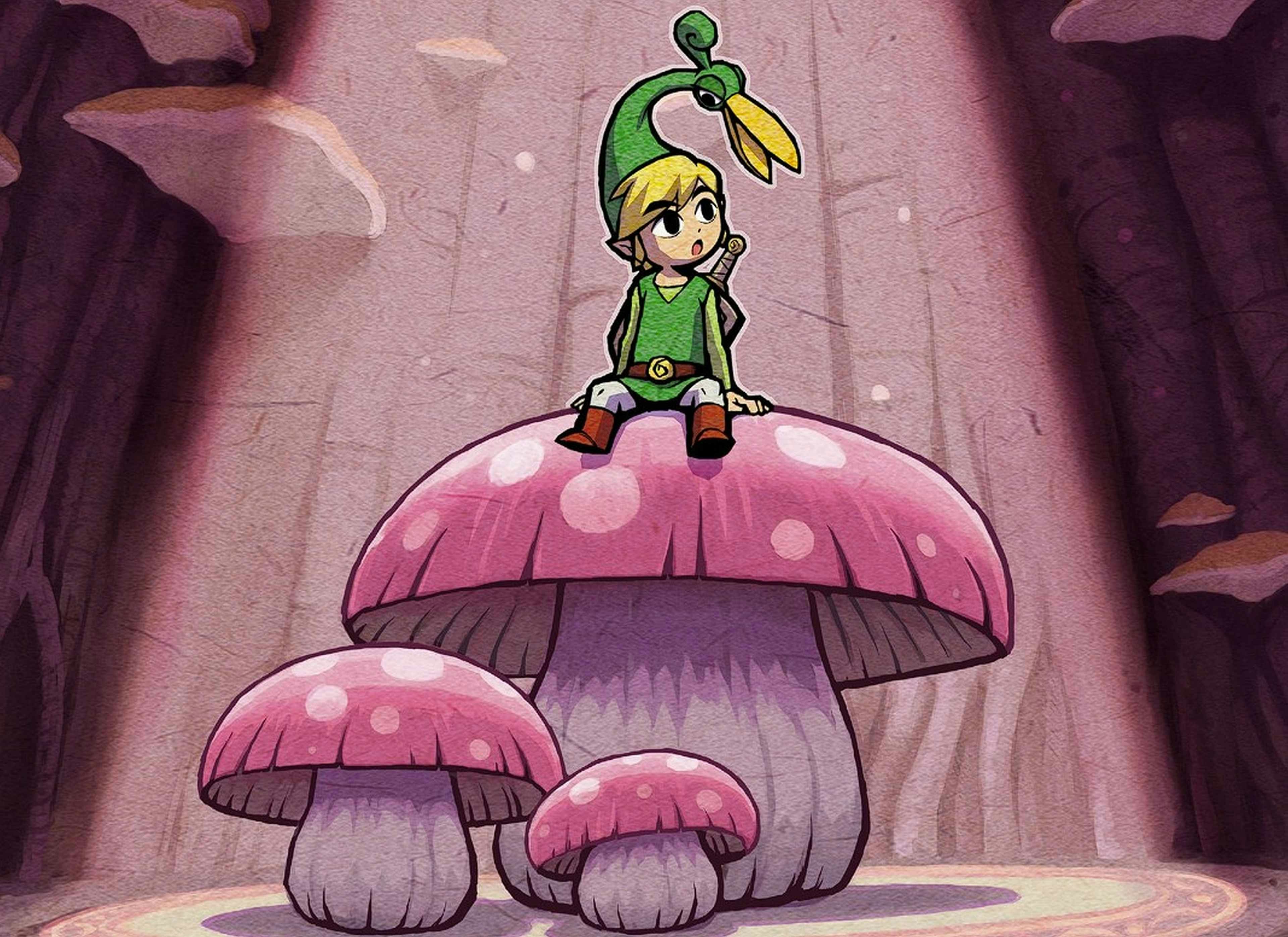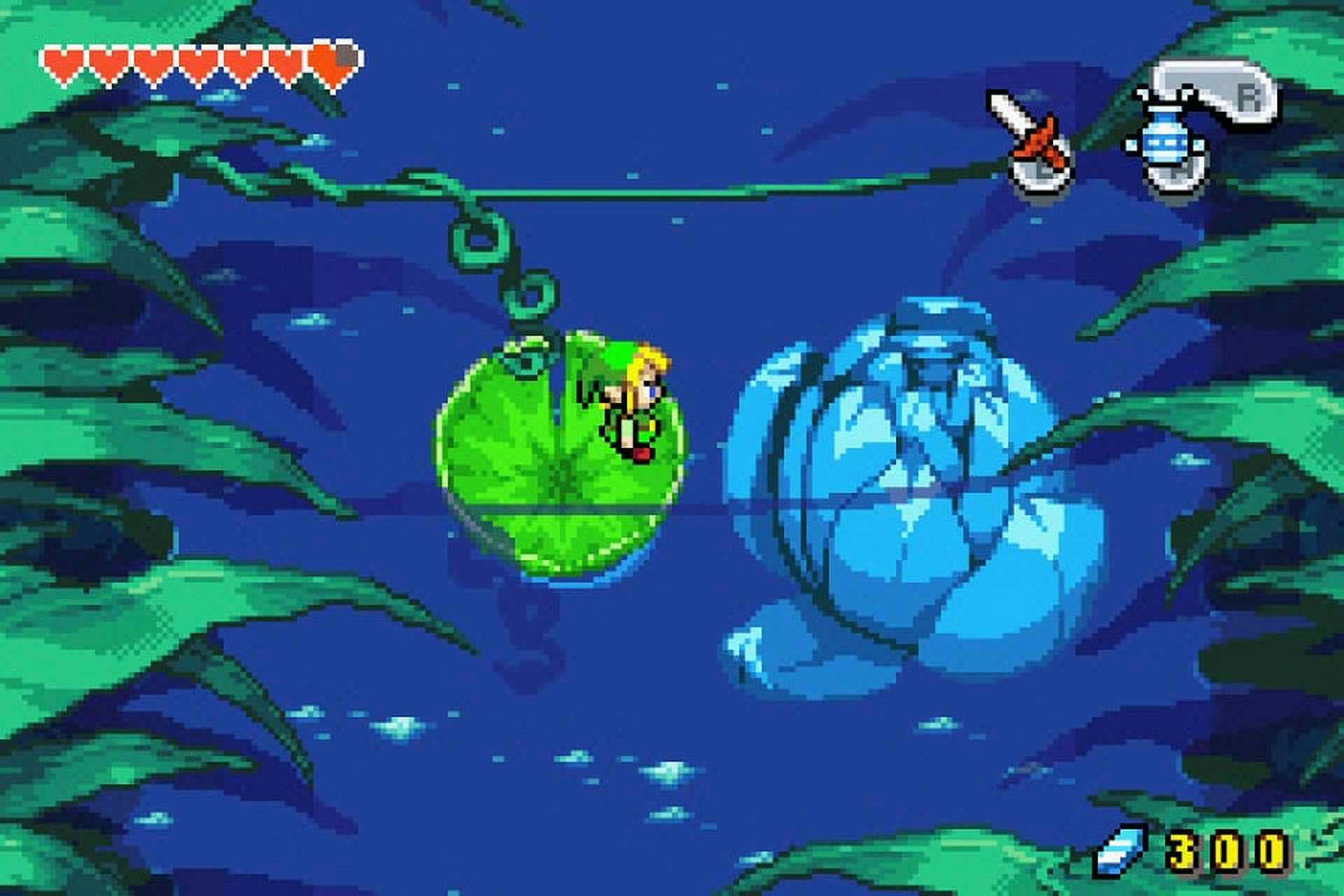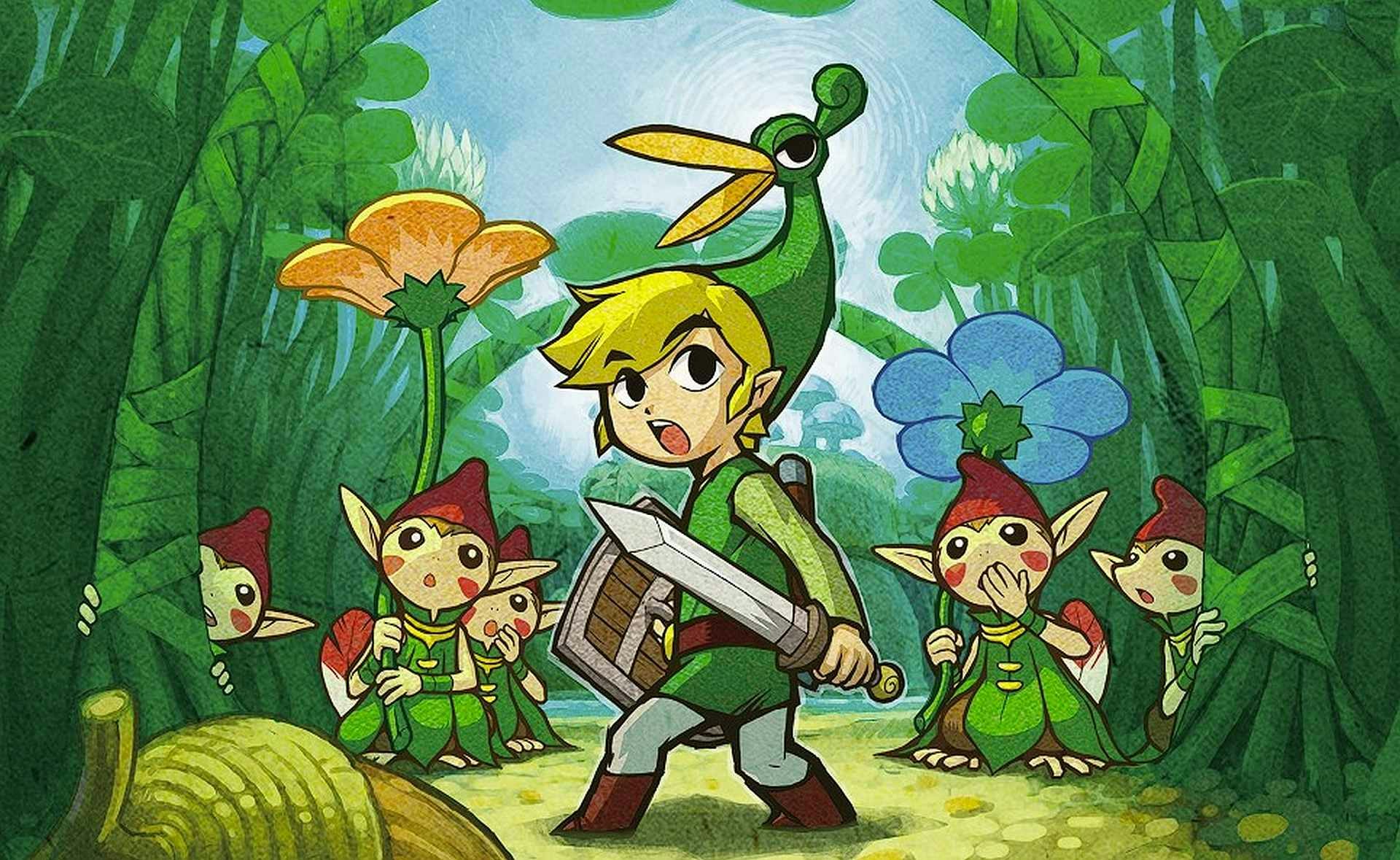
Bigger isn’t always better. A small package can often hide an amazing experience. That was the case with Nintendo’s Game Boy Advance, a handheld system with a catalog of games punching way above its class — some of which are now available on Nintendo Switch as part of the Switch Online Expansion Pack. The standout in the launch lineup is another deceptively small but mighty game, The Legend of Zelda: The Minish Cap, whose gorgeous art and inventive twist on the classic Zelda formula hold up immaculately on modern hardware.
Honey, I shrunk the Link
Every Legend of Zelda game has a new gimmick that defines it. Ocarina of Time had the ocarina, Majora’s Mask had time travel and the titular mask, Link to the Past had a dark and light overworld — the list goes on. 2004’s The Minish Cap has, well, the Minish Cap which in addition to being a talkative companion also gives Link the ability to shrink and grow Alice in Wonderland-style.

As in every Zelda game, Link must set out on an adventure to save the kingdom after evil attacks. In this case, the antagonist is Vaati, who turns Zelda into stone at the beginning of the game. The King tasks Link with seeking the aid of the Minish, a race of tiny people who have vanished.
After meeting the talking cap Ezlo (who is almost as chatty as Forspoken’s Cuff), Link gains the power to shrink to the size of the Minish and begins a quest to retrieve four elemental stones to craft a new legendary sword.
What follows is a greatest hits playlist of Legend of Zelda, as The Minish Cap follows the franchise formula to a tee. Rather than being repetitive, the game feels like an homage to classic titles of the past, specifically A Link to the Past.
The Minish Cap itself allows for the game to explore inventive new puzzles that come with being able to shrink and grow. The game’s first dungeon, the Deepwood Shrine, lays the groundwork for the shrinking mechanic that continues to be built out in the rest of The Minish Cap.
A particularly memorable section in the Deepwood Shrine sees mini-Link crawling into a barrel and rotating it in order to go through new paths around the dungeon. While fairly basic, it effectively establishes the fantasy and joy of being able to run around the smaller intricacies of the world.
Fun-sized
All of this is helped by the game’s gorgeous sprites, which demonstrate the peak of the Game Boy Advance’s powers. In the spirit of games like Final Fantasy IX or The Last of Us, The Minish Cap came out at the end of its console’s lifespan (the Nintendo DS launched the same year) demonstrating the developer’s mastery of the platform. Sprites are vibrant and alive, perfectly detailed in how it represents the macro and micro world available to explore.

The Minish Cap capitalizes on the inherent childlike joy of turning into a small little guy and exploring a hidden world utilizing everyday items in new ways. Properties like The Secret of NIMH, The Great Mouse Detective (lots of rodent properties), and Studio Ghibli’s Secret World of Arrietty demonstrate the same wonder of a hidden world of magic just under our noses.
In lore, the Minish people can only be seen by children, which is why Link is tasked with undertaking the journey to seek aid from them. Aesthetically and mechanically The Minish Cap reinforces that the game is about childlike wonder and adventure, and gives the player that feeling by playing it.
The Minish Cap is a superlative game from the Game Boy Advance that demonstrates the power of the Nintendo handheld to feel truly special in the games landscape. With its availability on Nintendo Switch as part of the Switch Online Expansion Pack, it brings some of that childlike wonder to modern hardware.
The Legend of Zelda: The Minish Cap is available on Nintendo Switch for Switch Online + Expansion Pack subscribers.







